During campus visit, U.S. representatives vow to fight freeze on federal research funding
East Bay Rep. Lateefah Simon and Los Angeles Rep. Ted Lieu visited the Innovative Genomics Institute for a tour and briefing
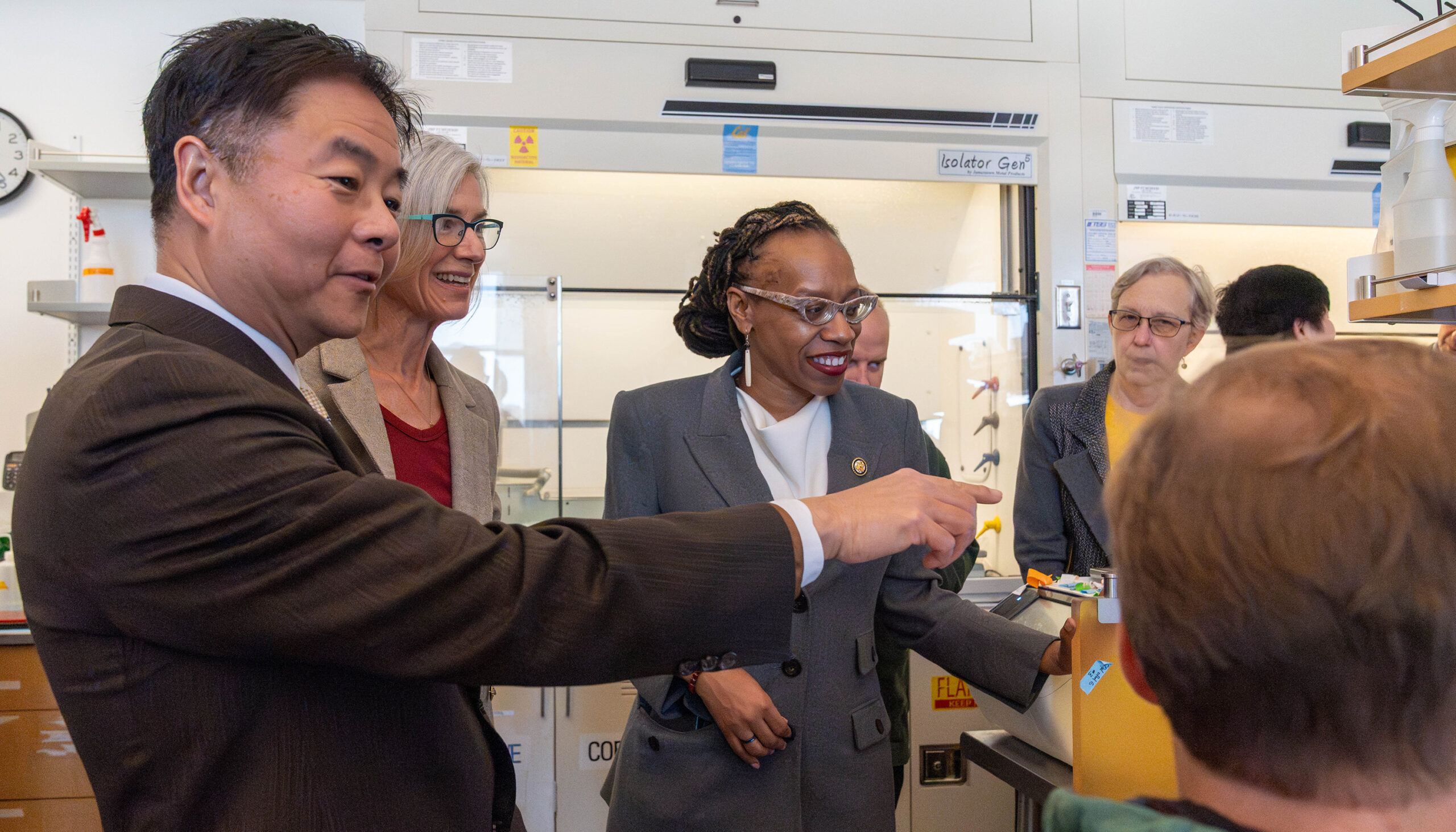
Diego Moran, UC Berkeley
February 24, 2025
Amid a government freeze on funding from the National Institutes of Health (NIH) and other federal agencies, two California representatives paid a visit to the the University of California, Berkeley’s Innovative Genomics Institute on Friday, Feb. 21, to hear about the importance of NIH-funded basic research. Both Democratic representatives vowed to contest the Trump administration’s attempts to drastically cut biomedical funding.
President Trump issued an executive order on Jan. 27 freezing payment on all federal grants and loans — a freeze still in effect, despite a temporary restraining order that was extended by a federal judge on Friday. Then, in early February, NIH ordered the reduction of indirect cost payments to universities — money that accompanies a grant to pay for the critical research infrastructure needed to innovate — to 15%. Universities typically receive this extra money to pay for facilities and administrative costs, which include electricity, shared research facilities, computing, student training and safety. That cut could drive a $37 million hole in UC Berkeley’s budget, vice chancellor for research Kathy Yelick told the representatives.
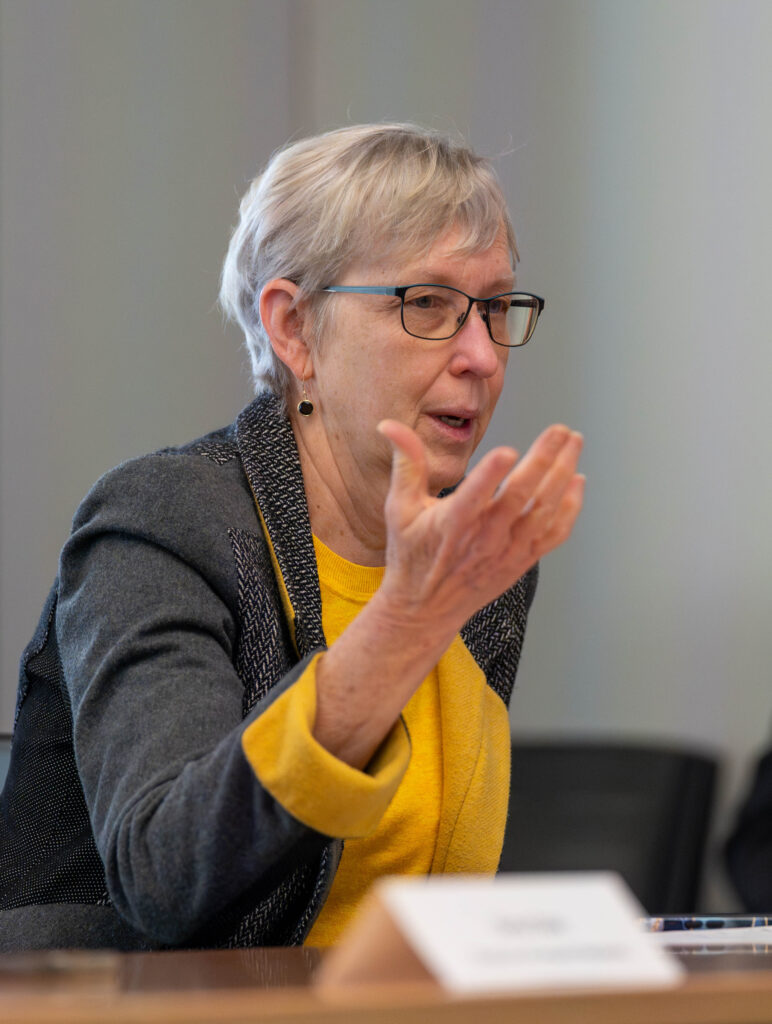
Diego Moran, UC Berkeley
“This and other actions have impacted researchers across the campus even beyond those funded by NIH researchers. People are afraid to admit graduate students right now because they just don’t know what the funding picture looks like,” she said, noting that UC Berkeley spent $169 million of NIH funds on research last year, “and that includes areas like artificial intelligence, quantum computing, biotech broadly, all these things that are clearly administration priorities.”
Nobel laureate Jennifer Doudna, the inventor of CRISPR and founder of the 10-year-old IGI, escorted Rep. Lateefah Simon (D-CA-12) and Rep. Ted Lieu (D-CA-36) through labs conducting research on CRISPR-based therapies for Huntington’s disease, sickle cell disease and other rare diseases. The IGI’s ultimate goal is to eliminate these diseases through one-and-done therapies. But because pharmaceutical companies generally avoid working on diseases that impact a small number of patients, Doudna said, it’s up to universities. For that, NIH funding is essential.
“There’s no reason why across blue and red we need to be having this conversation. But we are,” said Simon, a first-term congresswoman who represents Berkeley and Oakland. “Congressman Lieu and I, we really wanted to begin this conversation immediately as we learned about the freezes and the cuts so that we could go back … and fight like hell. You’re giving us information that can help shape public sentiment.”
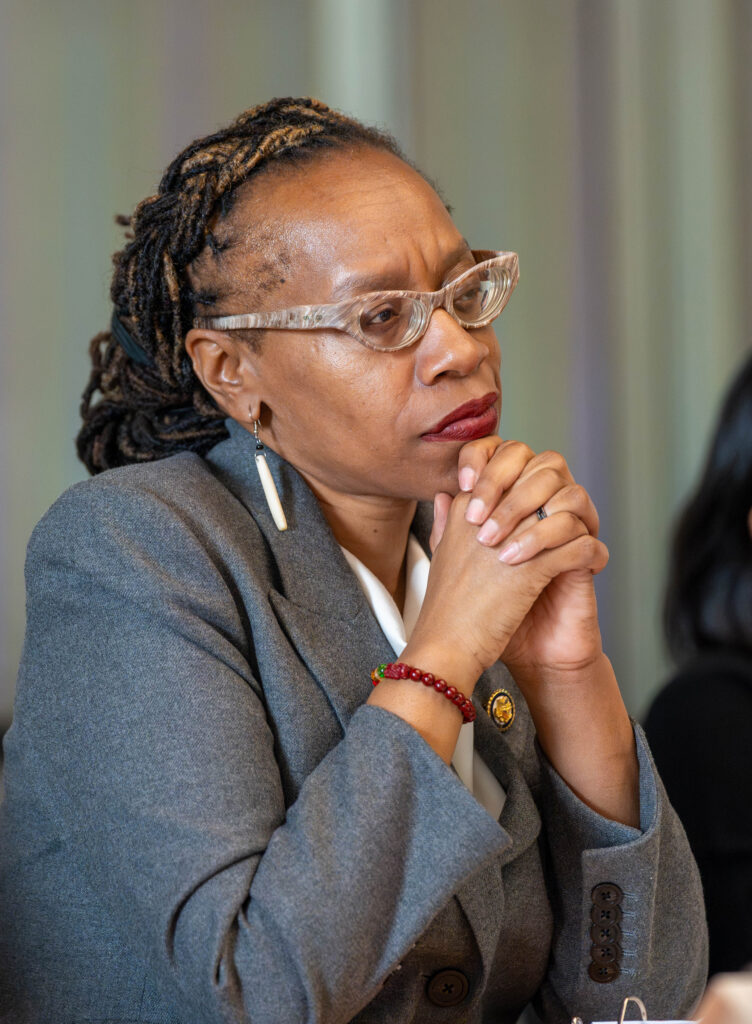
Diego Moran, UC Berkeley
“The Trump administration’s freeze and cuts to NIH make America sicker and weaker. They also happen to be illegal. That is why some 70-some lawsuits have been filed across a range of executive orders,” said Lieu, a sixth-term congressman representing the western part of Los Angeles County. “What you’re doing is very helpful. It allows Lateefah and I to tell stories. … It’s one thing to sort of generally say, ‘Oh, cuts are bad.’ It’s another to say this is going to affect research into Parkinson’s and ALS, Alzheimer’s, cancer, and sort of bring it home to a lot of people that either have these diseases or know people that have them.”
The Congressional representatives heard from four scientists at the forefront of using CRISPR to attack diseases. One of those, Dr. Petros Giannikopoulos, an associate professor of laboratory medicine at UCSF and director of IGI’s clinical laboratory, described his work as “not the sexiest part of drug development, but it’s a mission-critical part” — to make sure CRISPR therapies are safe. With some roughly 7,000 known diseases caused by single mutations in the genome afflicting and killing millions worldwide, any therapy like those IGI researchers are developing has to be free of major side effects.
“Unfortunately, the private sector is largely abandoning this space (rare diseases) for various commercial reasons and marketing efficiencies. So it actually falls on academic centers of excellence like ours to step in and fill the gap,” he said. “And for large universities like UC Berkeley, infrastructure costs are critical to let us operate. That’s why you can’t start a biotech company in a garage — there are high capital costs, not only brick and mortar, but core facilities for imaging, sequencing, protein purification. Indirect funding also goes for staff and training of new students.”
One of those trainees is Brigette Manohar from Trinidad and Tobago, who has NIH funding as a UC Berkeley graduate student to help develop ways to get CRISPR into the brain.
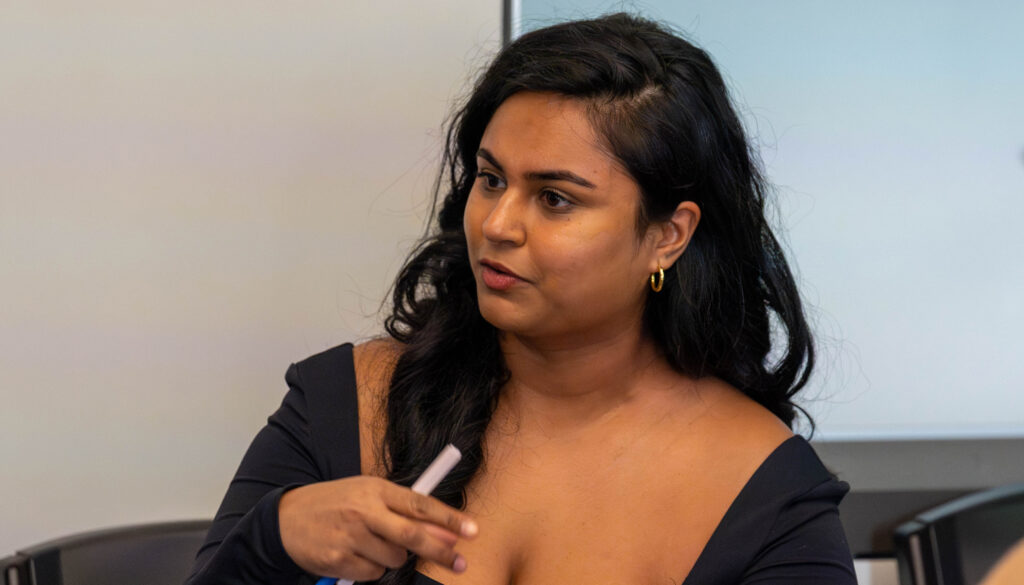
Diego Moran, UC Berkeley
“It’s just not knowing what is going to happen — it’s kind of giving us a lot of stress and anxiety. If my funding gets cut, that’s really my work, my future, at stake,” she said. “For the time being, I love my science, I am super cautious about this. So … taking all of that stress and just funneling it into science has been helping me.”
For physician scientists, such training can take years, said Dr. Claire Clelland, a UCSF researcher who sees patients with memory problems, many of them with fatal dementias. Medical centers such as UCSF, which receive proportionately more funding from NIH, stand to lose much more if NIH funding is cut than do basic research universities like UC Berkeley. While she expects that clinical trials now underway for such patients will continue, the freeze and cuts to indirect costs will hinder future work and the training of the next generation of researchers.
“It takes 20 years for someone like me to train as an M.D.-Ph.D. to get into the field,” she said. “That’s typically through NIH funding of a handful of folks at universities around the country who are important to the ecosystem.”
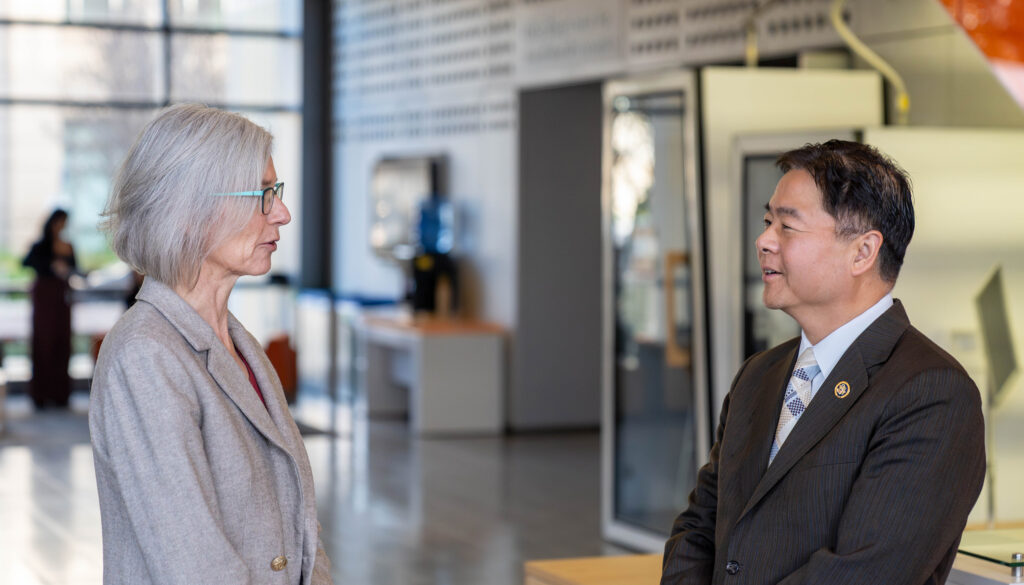
Diego Moran, UC Berkeley
The informational session at IGI helped put a human face on the diseases that have benefited from NIH funding. Fyodor Urnov, IGI director of technology and translation, introduced the representatives to a medical success story that began with the invention of CRISPR in Doudna’s lab with funding from the National Science Foundation. A mere eight years later, a CRISPR cure for sickle cell disease freed a young woman, Victoria Gray, of the devastating symptoms of the disease.
“I can say with absolute and definitive confidence, this medicine was entirely built on a foundation of discoveries made in U.S. research universities funded by the National Institutes of Health,” he said.
Rep. Simon related her husband’s fight with a rare type of T-cell leukemia, which required a stem cell transplant that kept him alive until their daughter was old enough, at age 3, to remember his face and voice. He died in 2014, but her daughter still remembers “a bit,” Simon said. Biomedical research made that possible.
“This is life or death for families who will never be the same if we wait on these therapies. So we’re just so thankful that you’re giving us this time today,” she said. “This is going to be an intense fight, but it’s one that we are ready to wage.”